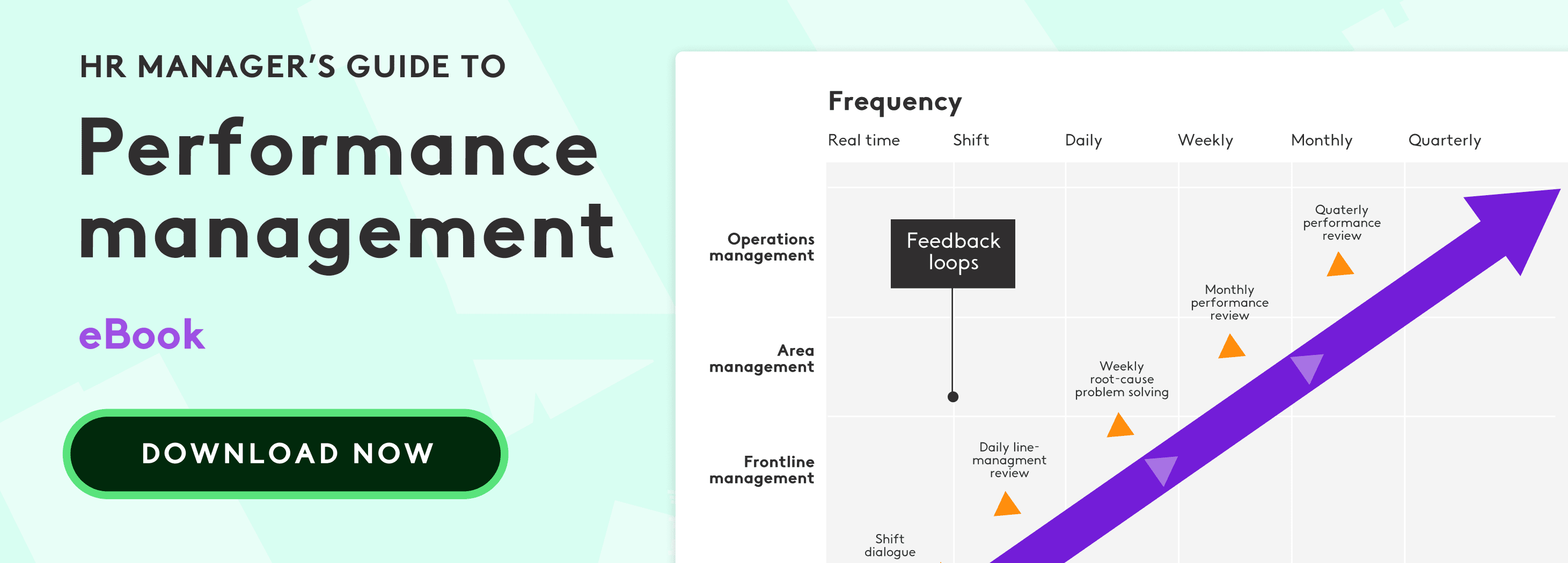When it comes to writing a performance evaluation self-assessment, it’s vital to be clear about a few essential points and follow specific guidelines that will help the employee to complete it.
A self-evaluation is commonplace in any performance appraisal and is crucial when analysing the results. So, we must ensure that all employees adequately contribute the same information.
What is a self-assessment, and why is it important?
A performance review self-evaluation is an assessment carried out by employees about their own work, following certain pre-established parameters and criteria. The aim is to encourage self-awareness and make the employee reflect on their performance and their contribution to the company.
We usually ask the employee to do a self-evaluation before receiving feedback from others in the company. This enables them to do an overview of their work, and once they’ve formed their own opinion, they get feedback from others.
Even so, there is one simple reason why a self-evaluation plays a crucial role in any performance appraisal process. Managers and colleagues won’t be able to remember every single milestone and accomplishment that every employee has achieved during the last six or twelve months. The self-evaluation provides an opportunity to add value to the work carried out and demonstrate personal achievements.
Apart from that, the human resources team obtains valuable information from a fresh point of view (the employee’s). For example, it helps them identify the strengths and weaknesses the professional believes they have and compare them with their colleague’s perspective.
Free Self Evaluation Template
To help you and your employees with their next self evaluation, we've created this self evaluation template that you can download for free. With this template, you and your employees will be able to prepare themselves in no time for their next performance review - with the added benefit that all your future self evaluations will be consistent in style and form. If you do have any additional questions that you would like to add to our template, you are of course more than welcome to modify it.

Steps for writing a performance evaluation self-assessment
When planning the self-assessment, always start by outlining who will take part in the process, and ensure that they commit to doing a credible and objective assessment.
Review and decision-making meetings should include representatives from the company’s main areas and the human resources managers, of course.
As a best practice recommendation, also include some form of external validation to confirm that the process is thorough and valid. You can do this with the help of external human resources professionals, a member of the management team or an independent consultant. All this will guarantee an unbiased view and will authenticate the evaluation process.
Further recommendations:
- Take a segmented approach to the assessment: it’s best to approach each dimension as a separate exercise. It is possible to plan, gather data and complete the preparatory work for one aspect in just a few weeks. When deciding which areas to assess, we recommend selecting those that need to improve.
- Schedule the self-evaluation: the assessment should fit in with normal business hours. It could coincide with timeframes for reviewing and developing the new corporate plan or human resources strategy. The self-assessment will, therefore, contribute to the development of new plans and give credit to the contribution certain people have made to the current development of the strategy.
- Gather data in advance: once the self-assessment process has been designed, you then need to gather information. This may mean examining:
-
- Earlier plans and strategies.
- Reports and audits carried out beforehand.
- Results of the employee survey.
- Benchmarking data.
Both quantitative and qualitative data should be collected. In this part of the process, it’s also essential to identify the most relevant sources of information and interpret the data.
Using human resources software when gathering data can be particularly useful. This kind of software works in the cloud, and stores information and compiles it on a single platform.
Conducting the performance review
Once the first step is complete, it’s time to do the performance review for your employees. Three things need to be done at this point.
Arrange meetings
You need to arrange meetings to review the selected dimensions, carry out the appraisal and complete the documentation. The data and background information gathered in the previous phase will come in useful here.
These meetings can last between two and three hours, more or less. The human resources manager will be there and, of course, the employee being evaluated.
Draw conclusions
A list of indicators exists for every dimension being evaluated in this process, that shows how they are carrying out their work. The assessment enables you to understand what’s happening. Hopefully, the meetings will help to use the evidence available to justify or validate the conclusions that have been drawn.
Because the information is held in a form, there are two ways of grading people:
- Consider how much weight each question carried towards the importance of the human resources strategy. You can set up three ratings: very important, moderately important or not very important.
- Observe the employee’s progress and how much they have advanced in their work on a scale of “significant”, “moderate” or “limited.”

Gather the evidence that supports the conclusions
Complete the list of conclusions by making note of the evidence that supports them, both by areas of importance and progress.
This checklist becomes an agenda for the review meetings and other future discussions; in other words, it will be a key document for subsequent phases.
We also recommend having some form of “working document” to record comments and notes that could be useful in explaining or contextualising the conclusions or priorities identified.

Results of the self-evaluation
The self-assessment will provide useful evidence to support the company’s capacity to:
- Assess the current practices and performance in people management.
- Use a systematic self-evaluation based on evidence.
- Identify areas for priority action.
- Prepare, review and update HR’s strategic priorities.
- Demonstrate where and how people management supports business performance on a broader scale.
- Provides all parties with a guarantee of the person’s qualities, of management and of continuous improvement practices in the company.
The results obtained should, therefore, add value to planning and decision-making in other areas, and not just in human resources. This will only be possible if you create a brief report to distribute within the company and ensuring it reaches different people.
Some people who should be involved include:
- Other members of the human resources team.
- Managers who helped to prepare the report.
- Top management.
- Committees with an interest in people management.
- Employee associations or syndicates.
- Other managers or important people in the organisation.
In this article of our blog you can read different examples of performance self-evaluation.




